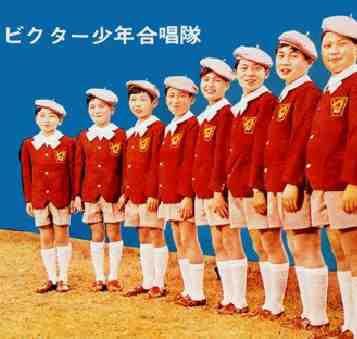
Figure 1.--This Victor Boys Club Choir in 1962 wears a destinctive uniform of pink berets, red blazers, white bows, pink short pants, white kneesocks, and matching red shoes.

Figure 1.--This Victor Boys Club Choir in 1962 wears a destinctive uniform of pink berets, red blazers, white bows, pink short pants, white kneesocks, and matching red shoes. |
One of the most important Tokyo boys choir since the 1960s has been the Victor Boys Club Choir. This choir looks to
be particularly active in the 1980s. It appears to have boys from about 8-12 years of age.
The choir was formerly closed in 1985 but in fact was purchased by FM Tokyo. The
choristers continued singing as members of the new Tokyo FM boys choir.
Victor is a company manufacturing Audio/Visual material. They also are arecording company. The products of Victor are sold as JVC brand around the world. As part of its corporate image
Victor supported the choir. It also recorded the choirs work and marketed it.
I'm not sure when VBC was founded, perhaps in the 1960s. It was one of the best known choirs in Japan. Tokyo FM Broadcasting purchased the Victor Boys Club, Japan on April 1, 1985. The choir was renamed the Tokyo FM
Choir. Tokyo FM informs HBC that, "All the VBC choristers continued their lives as littlesingers with Tokyo FM."
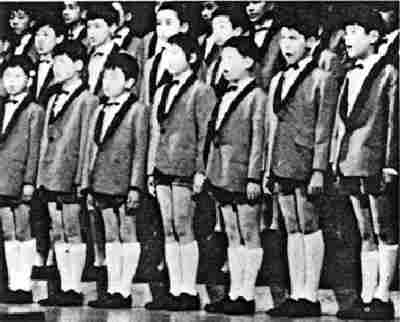
Figure 2.--This photograph shows the Victor Boys Club Choir, pobably in the 1970s. |
The Victor Boys choir served as a backup to the Southern All Stars, Japan's most popular
mainstream rock band, for a decade or more. Vicotor choir served as backup to the Shouthern All Stars in 1978.
The Victor Boy's Club Choir uniform changed significantly over the years. The boys had
a variety of different costumes. They had suits for formal occasions. All the suits
were short pants suits. The jackets always
had crests on them like British school blazers. The boys also had informal
"T" shirts and sweaters for informal occasions.
In the 1960s they wore
destinctive pink berets, red blazers, white bows, pink short pants, white kneesocks, and matching red shoes. The pink berets were very distinctive. Berets were not commonly
worn by Japanese boys. Apparently the choir directors who looked to European choirs, in this
case French, for inspiration. While the idea of berets must have come from France, the
inspiration of pink berets is unclear. The shorts worn in the 1960s were rather long knee-length shorts.
Subsquently the shorter cut shorts worn by Japanese boys at the time were used for
the choir uniforms.
A historical photograph which looks to have been taken in the 1970s shows the boys
wearing short pants suits. I'm not sure what color the jackets were, but they seem to
have black velvet lapels. Note that they wear white kneesocks with their suits rather than grey or other colored kneesocks. Their short pants are the short cut shorts popular in Japan
at the time. It is unclear though if this is the Victor Boys Club Choir or the Tokyo FM
Chorus.
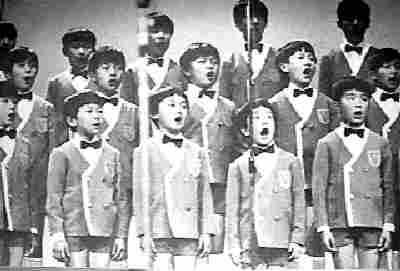
Figure 3.--The Victor Boys Club Choir in 1977 performed in short pants grey Eton suits with contrasting piping and sporting bow ties. |
The Choir wore different uniforms for the 1977 VB Club competition. They had a fornmal suit as well as less formal outfits. These different costumes appear to have been worn for
different occasions and by different boys for effect during the same performance.
There formal costume
was Eton collar less short pants suits worn with white shirts and bow ties, white knee socks,
and black shoes. The little white bows worn in the 1960s were replaced with modern
looking bow ties. The inspiration here may have been American. The collarless Eton short
pants suit was a popular style for younger American boys. The bow tie was a popular choice
for Eton suits, although some boys wore them with Peter Pan collars. I'm not sure what the color of their suits were as the available image
is black and white. The suit shorts, unlike their 1960s costumes were cut much shorter,
more like the shorts commonly worn by Japanese boys.
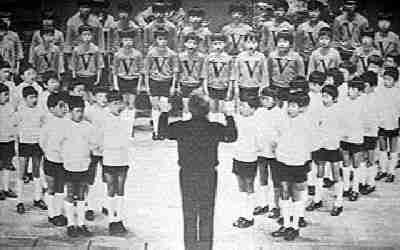
Figure 4.--The VBC Choir wore different shirts and sweaters for their performances in 1977. |
The boys also wore colored "T" shirts with a large "V" and white
turtleneck sweaters, both worn with black shorts and white kneesocks. I think they may have worn these outfits for less formal performances. Boys wore both outfits for some
performances. The prevelence of these informal uniforms reflects the more pop approach
to music by the Japanese choirs. The European choirs often have very formal
programs with demanding clasical music. The Japanese choirs perform less demanding pop music and in many cases children children's music.
I do not know if there was any difference in the boys chosen to wear the different
costumes. Sometimes differences in the uniform are chosen to reflect the boy's musical
accomplishments or ages. I do not know if this was the case for the Victor Boys Club
Choir.
I am not sure if these images were taken at different performance or a coral competition
sponsored by the Victor Boys Club Choir. Unfortunately the Japanese web sites on the choirs
offer little information in English.

Figure 5.--The boys of back row (five boys) are menbers of Victor boys chorus and center three boy's wear the black uniform short pants. The other boys wear denim shorts which were very popular in Japan. The photograph was taken in 1983. |
The choir in the 1980s wore black short pants. They had monogramed white "T" shirts
which they would presumably wear to practices and outings. The Victor Boys Club Choir and
most other Japanese choir give considerable attention to costuming for the choirs. So
this would not have been a uniform the boys performed in.
The Victors Boy Club Choir during the 1980s often peformed in blue shirts, black
short pants (some may be wearing dark blue shorts), and white kneesocks. The boys no longer
appear to be wearing the "V" emlazoned "T" shirts and turtlenecks that they wore
during the 1970s.
By the late 1980s many Japanese boys were beginning
to wear long pants to school and for play, especailly during the winter. Thus practice photographs of
practice sessions show many of the boys in long pants. This probably in part reflects
the boys' school uniforms. Most elementary schools did not require uniforms, but about
one-third did, ususlly blue shorts and white kneesocks. Quite a few boys of these
boys wear the short pants uniform even to practice sessions or recording sessions where
there was no audience. None of the boys wear the longer styled shorts that had begun
to appear in Europe. Most of the boys in shorts wear traditional white knee socks, but
a few wear the American styled tube socks that were popular in the 1980s.
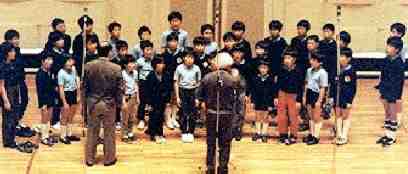
Figure 6.--This 1989 photogaph shows the boys at a recording session. As there was no audience, many of the boys did not come in their uniforms. |
I am not sure what type of music the choir director selected for the performances.
It was probably the same combination of popmusic and Japanese childrens music,
perhaps with a few spirituals added in.
Navigate the Historic Boys' Clothing Web Site:
[Introduction]
[Chronologies]
[Style Index]
[Biographies]
[Bibliographies]
[Contributions]
[Activities]
[Countries]
[Boys' Clothing Home]
Navigate the Historic Boys' Clothing Japnese pages:
[Main Japanese page]
[Japanese monarchy]
[Japanese school uniform]
[Japanese scouts]
[Japanese choir page]
[Japanese music recitals]
[Japanese department stores]
Navigate the Historic Boys' Clothing Web choir costume pages:
[Return to the Main Japanese choir page]
[Return to the Main choir page]
[Australia]
[Austria]
[Belgium]
[Bulgaria]
[Denmark]
[England]
[France]
[Finland]
[Germany]
[Ireland]
[Netherlands]
[New Zealand]
[Poland]
[South Africa]
[United States]